The Australian Bureau of Statistics (ABS) released dwelling construction data for the June quarter of 2025, which suggested that Australia’s housing shortage has worsened.
The number of dwellings that commenced construction in the June quarter declined by 4.4% to 45,156, driven by a 6.6% fall in detached housing:

However, over the year to the June quarter of 2025, total dwelling commencements lifted by 9.2% to 179,038, driven by a 27.7% increase in units and apartments:
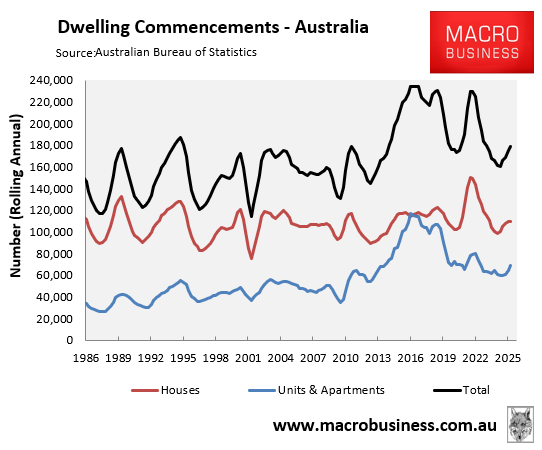
The picture is worse for dwelling completions.
The number of dwellings that completed construction in the June quarter declined by 6.5% to 40,524, driven by a 17.5% drop in units & apartments:
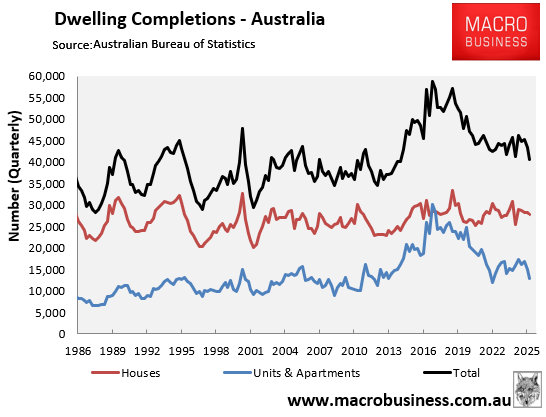
It was the weakest quarter of dwelling completions for 11 years (i.e., since the March quarter of 2024).
Over the year to the June quarter of 2025, total dwelling completions fell by 12.5% to 174,030, driven by a 26.7% increase in units and apartments:
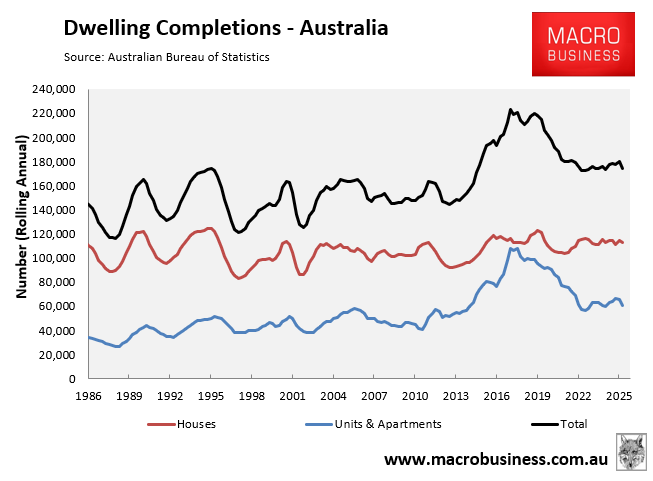
Australia’s dwelling construction continues to fall far behind the Albanese government’s Housing Accord target, which requires 240,000 dwellings to be built annually over five years (i.e., a total of 1.2 million homes).

Over the first year of the Housing Accord, which commenced on 1 July 2024, only 174,030 dwellings were completed, which was 65,970 (27%) below the 240,000 annual target.
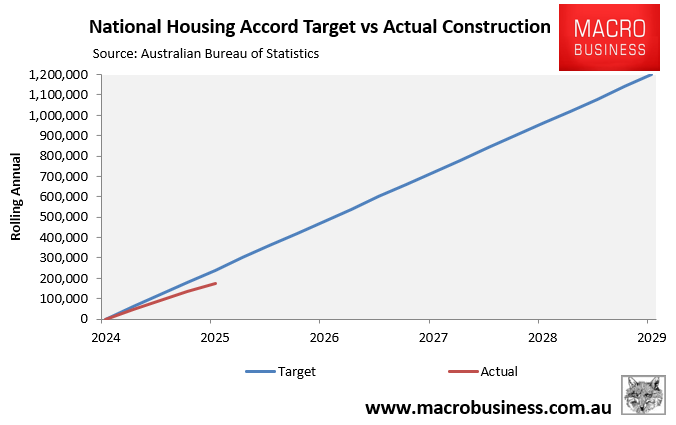
It also means that Australia will have to build around 256,000 homes annually over the next four years to meet Labor’s 1.2 million target.
The following chart plots annual dwelling approvals, commencements, and completions against the nation’s population growth to the June quarter of 2025:

There are multiple reasons why dwelling construction has stalled, including:
- Interest rates are structurally higher.
- Construction costs have risen by more than 40% since the pandemic.
- Residential lot values have risen by around 33% since the pandemic.
- Labour shortages due to government infrastructure projects and high rates of bankruptcy.
Meanwhile, the latest data on net permanent and long-term (NPLT) arrivals from the ABS hit a record high over the first eight months of 2025, suggesting that net overseas migration has reaccelerated from already historically high levels:
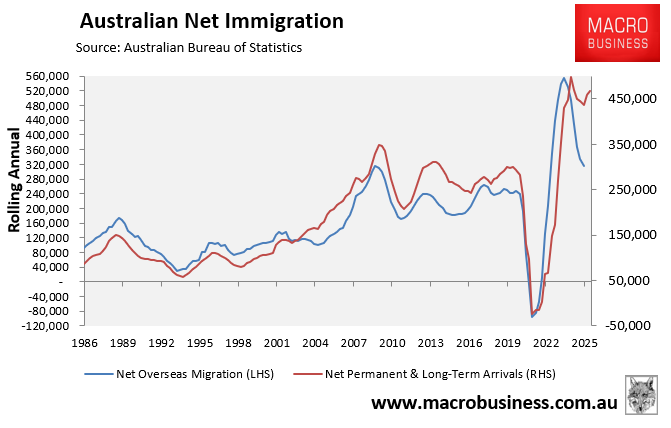
This apparent resurgence in immigration is likely behind the retightening of the nation’s rental market.
The number of homes listed for rent nationally, alongside the vacancy rate, has collapsed to a record low.
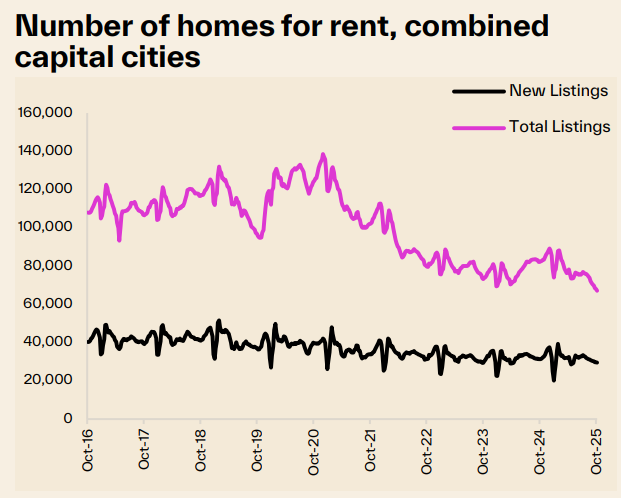
Source: Cotality
As a result, Cotality reports that capital city rental growth has accelerated, which follows a 43.8% increase over the previous five years:

It is difficult to see how the rental situation will improve given that dwelling construction has fallen at the same time as net overseas migration appears to have reaccelerated.

